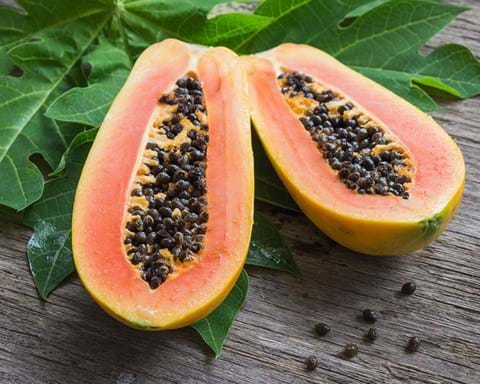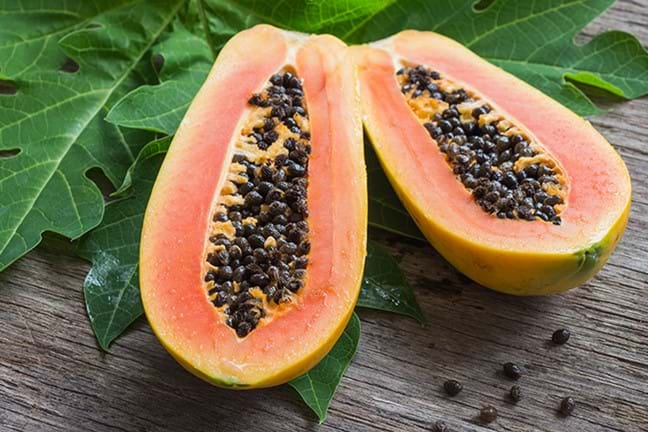How to grow paw paws in a garden
Step 1
Choose a sunny spot with well drained soil. Enrich the soil with
Yates Dynamic Lifter Soil Improver & Plant Fertiliser. If the soil is clay based, add gypsum and fork in well. Mound the soil to improve drainage, if necessary.
Step 2
Dig the planting hole twice as wide and to the same depth as the root-ball. Remove the shrub from the container, gently tease the roots and cut away any circled or tangled roots.
Step 3
Position in hole and backfill with soil, gently firming down. Form a raised or doughnut shaped ring of soil around the outer edge of the plant's root zone. This helps keep water where it's needed. Always water in well after planting to settle the soil around the roots and keep the soil moist for several weeks while the new plant establishes.
Step 4
Mulch around the base with organic mulch like bark chips, sugarcane or pea straw, keeping it away from the trunk.
Step 5
Water regularly and deeply as the plant grows – once a week for most the year should be sufficient. During the warmer or drier months, you may need to water twice a week. Deep watering is preferred to shallowing watering every other day.
Step 6
Feed with a complete fertiliser, such as Yates Dynamic Lifter Soil Improver & Plant Fertiliser in spring and autumn. For an added nutrient boost, feed with Yates Thrive Citrus Liquid Plant Food weekly during the flowering season.
Step 7
To harvest, pick fruit when it is fully coloured or two-thirds golden and allow to ripen indoors.
How to grow paw paws in a pot
Step 1
Choose a pot at least 600mm wide and deep. Position in full sun and protect from strong winds.
Step 2
Fill pot with quality mix, such as
Yates Potting Mix with Dynamic Lifter, making a hole in the centre. Remove shrub from the container, gently tease the roots and cut away any circled or tangled roots.
Step 3
Position in hole and backfill with potting mix, gently firming down. Water well.
Step 4
Mulch around the base with organic mulch like bark chips, sugarcane or pea straw, keeping it away from the trunk.
Step 5
Water regularly and deeply as the plant grows – once a week for most the year should be sufficient. During the warmer or drier months, you may need to water twice a week. Deep watering is preferred to shallowing watering every other day.
Step 6
Feed with a complete fertiliser, such as Yates Dynamic Lifter Soil Improver & Plant Fertiliser in spring and autumn. For an added nutrient boost, feed with Yates Thrive Citrus Liquid Plant Food weekly during the flowering season.
Step 7
To harvest, pick fruit when it is fully coloured or two-thirds golden and allow to ripen indoors.
How to grow paw paw from seed
You can grow a pawpaw tree from seeds from fruit of female trees. They generally don't like to be transplanted, so it's best to plant them where you intend to leave them.
Step 1
Choose a spot in full sun and enrich the soil with organic matter, such as Yates Dynamic Lifter Soil Improver & Plant Fertiliser.
Step 2
Sprinkle the seeds over the top and lightly cover with soil. Water in well and lightly mulch. You cannot tell whether the seeds are male or female, so it's ideal to plant 4-5 plants – odds are you will have at least 1 male tree for pollination.
Step 3
Water regularly as the seedlings grow. Remove any weak plants and discard.
Step 4
Feed with a complete fertiliser, such as Yates Dynamic Lifter Soil Improver & Plant Fertiliser in spring and autumn.
Step 5
Once they start flowering, take note of the flower shapes - keep one male plant (flowers are borne on long, thin stalks) and discard the rest. Keep any female plants (flowers are single blooms and held closer to the trunk). If you have any bisexual plants, lucky you!








